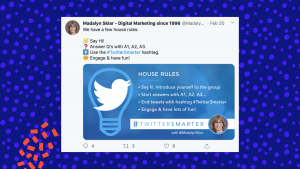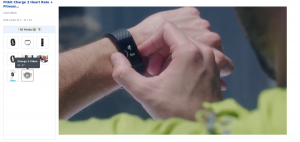 By Rohan Ayyar, January 22, 2015
By Rohan Ayyar, January 22, 2015

One of my favorite things about content marketing is the prevalence and effectiveness of digital communities.
They are a fantastic place to reach a pool of people interested in the niche that your business, product or service falls in to. Communities—especially on LinkedIn and Google plus—are based on niches, not genres, which means you can target consumers on a fairly granular level. For example there aren’t many communities on overall marketing. Rather, there are communities for social media marketing, PPC, even marketing on specific digital channels. This allows you to participate in conversations pertaining only to the type of marketing you’re interested in and filtering out all the discussion on traditional outbound marketing and advertising.
Being a member of communities and even running your own is a great way to market to groups of target buyers all over the digital web.
Why communities?
Have you considered the probability or circumstances where customers could be dying to learn about your brand and all the topics that surround it? The catch? They don’t want to hear about your brand from you!
Communities are part of a cookie crumb train that leads consumers to your brand’s digital door step. Come to think of it: you’re already creating the content for the rest of your content marketing strategy. Communities are just another place to share your content.
When you run your own community, you’re establishing yourself as an authority on a given topic. This is one of the best things you can do for your brand’s image.
When you share content in other communities you are being an active member and getting love from your peers while spreading your message. This comes without the bother of moderation or time commitments.
So you see, there are pros in both starting your own communities as well as joining existing communities. Let’s run through the best practices for both options.
Best practices when running a community
Since it’s so important to manage and keep up with your community, you’re better off starting with just one per channel. For example, you could run a LinkedIn and Google Plus community (both on the same topic, say digital marketing. But you could be a member of many other communities at the same time.
- Start discussions that are intriguing by asking a good question.
- Share thought-provoking facts, stats, opinions, research and content about anything and everything related to your industry, even if they don’t involve your brand or products. Put your company blog to good use in doing so.
- Share all of the content you create but don’t just post a link, ask a question that accompanies it.
- Engage in all posts and discussions posted by others. Comment on the content people share and ask questions about it.
- Set ground rules for your community that include no self-promotional material, keep the conversation on topic, etc. and stick to these rules. Part of running a community is moderating which includes kicking people out or reprimanding them for breaking the rules more than once.
- Post notes to the community such as tips and thanks for their content shares and good discussion starters.
- You want to be looked at as a leader in your niche right? This starts with making it apparent that you’re a leader in your group by actively participating and moderating.
- Promote, promote, promote. (Tips on that a little further in the post.)
Best practices as a community member
As a community member your goal is more networking than leading the way as a community owner.
- Post content that links to your brand but is not about your brand.
- Share other people’s content that have nothing to do with your brand but you know the community would find it interesting.
- Read other members’ posts and comment on them.
- Answer questions people ask with good resources and advice.
- Invite them to connect with you and engage on other channels such as email, another social network, etc.
Where to house your communities
Google Plus: Set up a Google+ page for your brand and then start your own community that ties in with this page. G+ communities are exploding all over the digital scene and there are a ton for every niche, so make sure you get your competitive edge by enforcing your community’s rules and only sharing premium content and advice.
LinkedIn: LinkedIn communities are popular mainly for B2B brands and topics. These discussions tend to be very professional and cover topics related to business, marketing, etc. Just like G+, make sure you link your community to your business’s LinkedIn company page.
Blogger Networking: Because your company most likely has a blog, network with other bloggers who write about what you do. Establish a community of bloggers who swap posts with you, link to each other’s content and share tips and advice.
Tweet Chats: Tweet chats are a great way to network and be an authority on a discussion topic pertaining to your brand.
The best thing? They are super simple to both participate in and host. Basically a time is scheduled and promoted—about an hour—that the chat will take place. A hashtag is designated and an interesting topic is chosen that the tweet chat is centered around.
- Following tweet chats: Actively participate in the discussion by lending advice, tips, experience, etc. Do not promote or talk about your brand. However, it is acceptable to link to content put out by you or your brand only when it’s relevant. Don’t forget to ask good questions to start intriguing discussion that pertain to the chat topic!
- Hosting a tweet chat: It’s your job to obviously pick the hashtag, date, time and topic for the tweet chat. Actively promote and keep everyone posted so they don’t forget about your virtual event. When it comes time for the chat, you need to moderate and make sure the conversation stays on topic. Prepare some thought-provoking topics and questions ahead of time so that you have “conversation starters.”
Comments Section: The comments section of your own blog, someone else’s blog post or one of your guest posts can be a great way to join discussions with other people seeking out the niche your brand falls in to. Actively participate in the comments discussions, offer tips and advice and even links to content when relevant.
Community recruiting and promotion
- Using all of your social networking sites, cross promote your communities.
- Send emails out to all of your mailing lists with link to the community, a brief description of what you’re going to center the community around.
- With all forms of your promotion, it’s not a bad idea to emphasize that the community is a place to learn and share ideas not a place to be.
- Don’t be fancy with the name of your community, allow it to explain exactly what your community is about.
- As people join your community ask them to invite people from their own networks.
- Keep up with great content, discussions and commenting so that you retain the members you have.
- Enlist all the content marketing practices that you use already to promote content such as link to your communities from blog posts, from your home page and share them or excerpts of content from them on Twitter and Facebook.
Key: make the consumer part of the brand
One of the best things about running digital communities and having the ability to communicate with current and potential consumers is that you can allow them to be part of your brand.
Whether it’s in a G+ community, a LinkedIn group, a blog post comments section or a tweet chat, make sure you ask questions and emphasize the fact that your consumers are not an extension of your brand but a part—hence the whole concept of digital communities in the first place.
Strategies on making consumers a part of your brand
Within your communities, enlist the following practices so that your community members—your potential and current consumers—feel like they are a part of your brand.
- Ask them for feedback on a new product or service.
- Let them weigh in on questions and decisions that your company is facing internally.
- Let them vote on changes to the brand.
- Give them shout outs when they share your community posts and when they come up with a good idea or suggestion.
The takeaways
Digital communities make for a fantastic marketing tactic when executed well. The main thing I hope that you take away from this post is to be a leader of your communities that you run by keeping the conversation alive and always on topic. I also hope you understand the value of actively participating in communities that you don’t run by sharing advice and good content.
And most of all, never come across as self-promotional. It’s great to share content that presents your brand in good light, but the overarching goal of community building is to establish yourself as an authority figure.
Do you have any advice on running or participating in a digital community? I’d love to hear from you in the comments below!
(334)
Report Post







